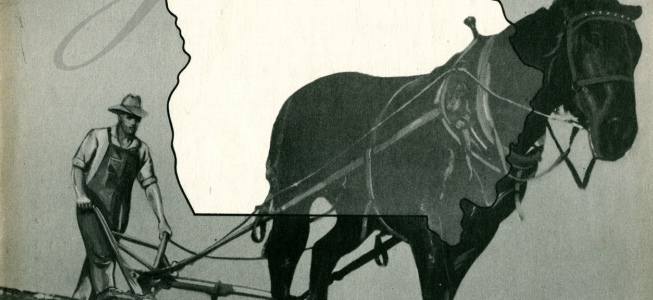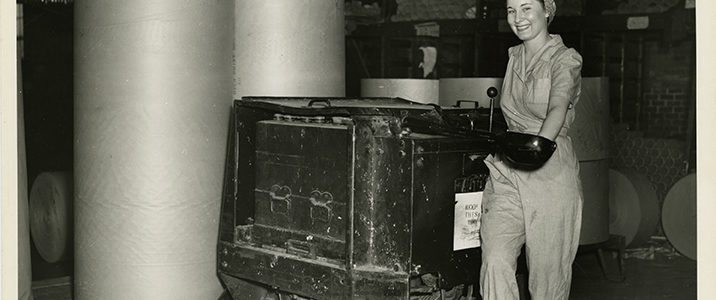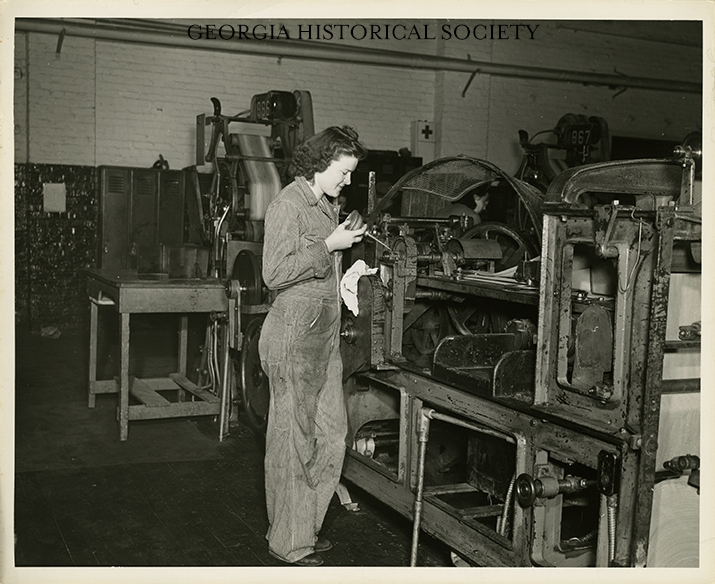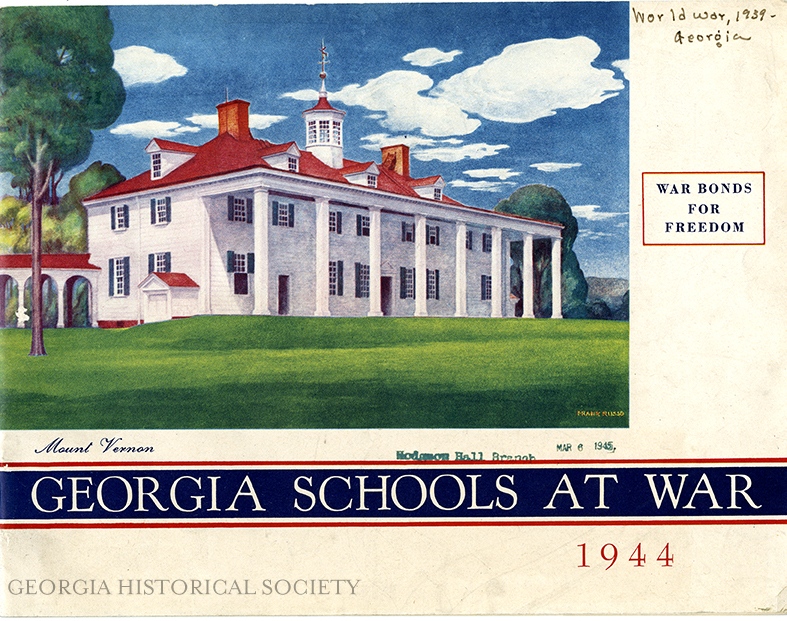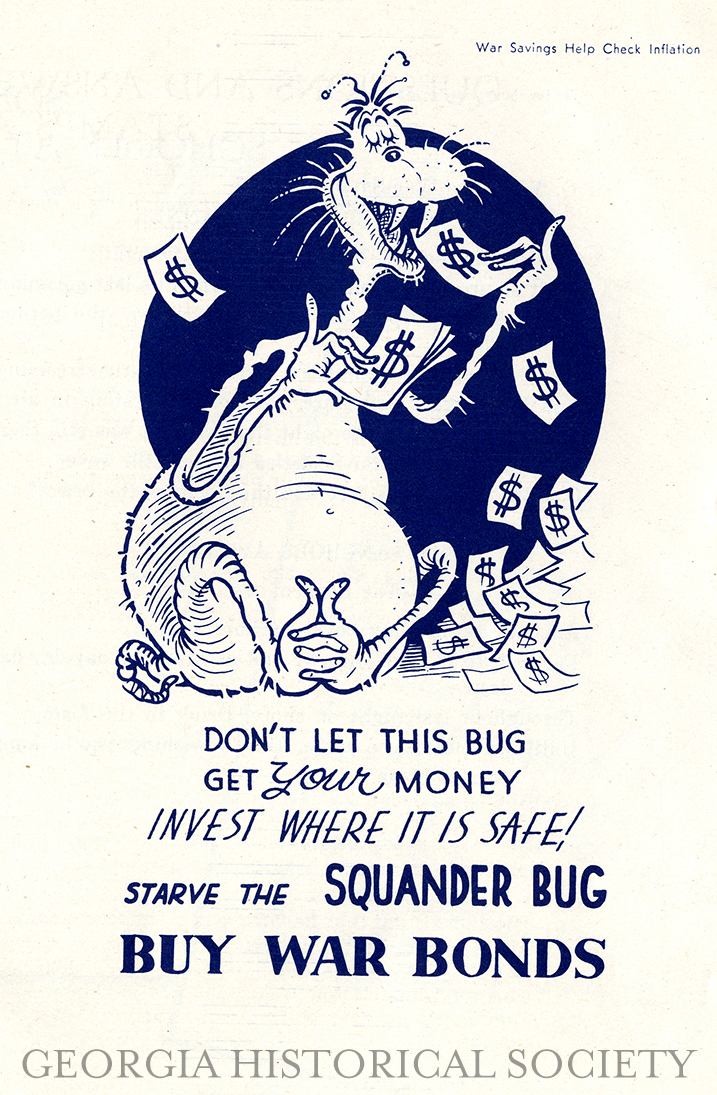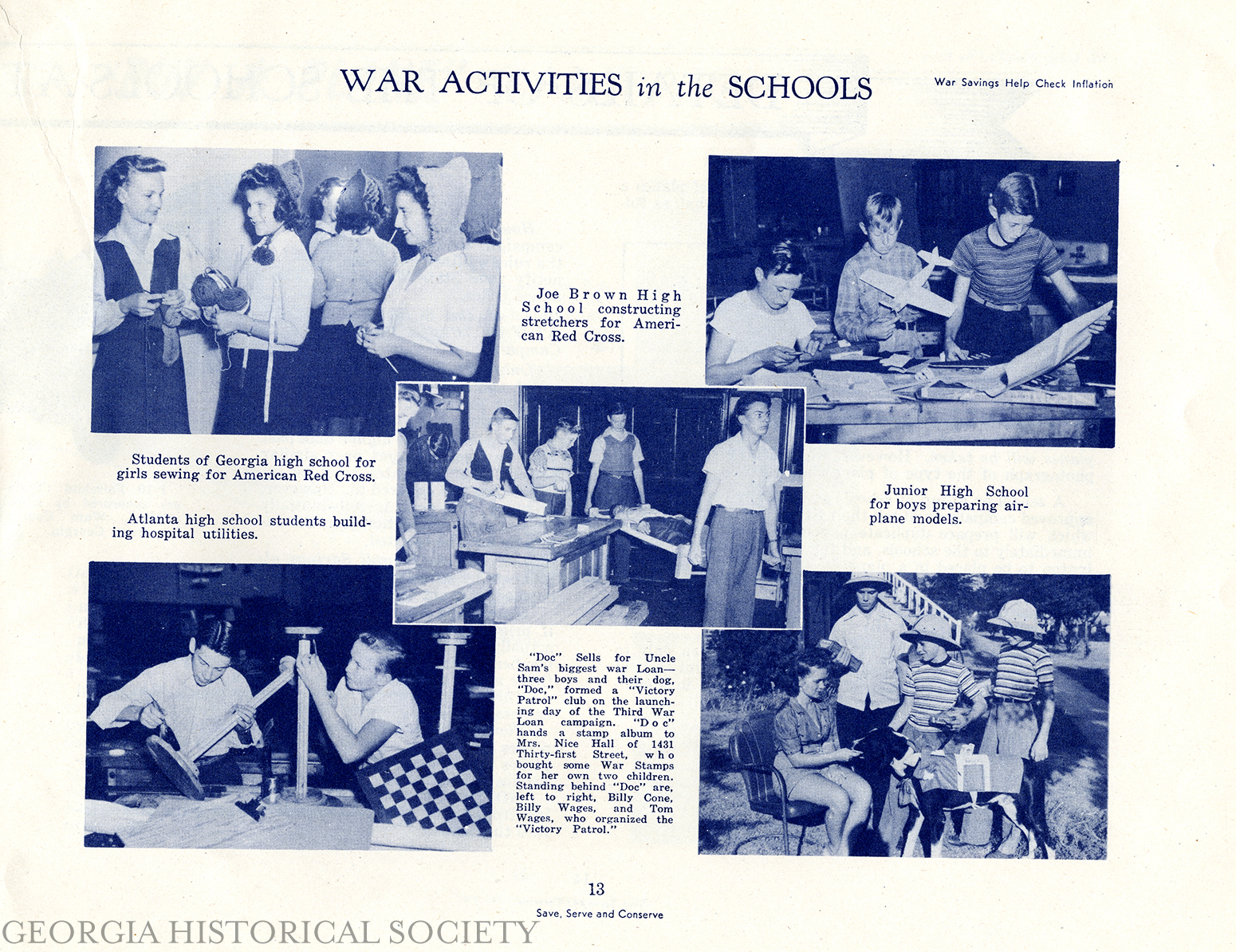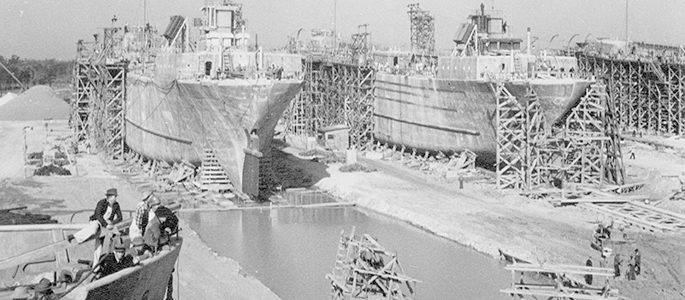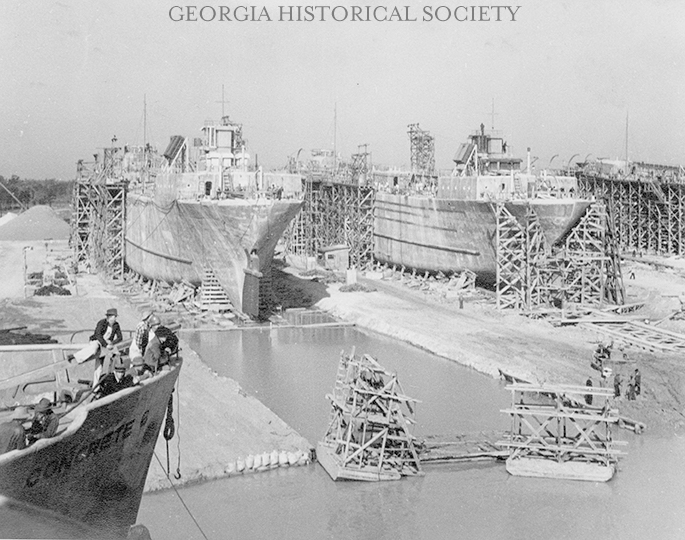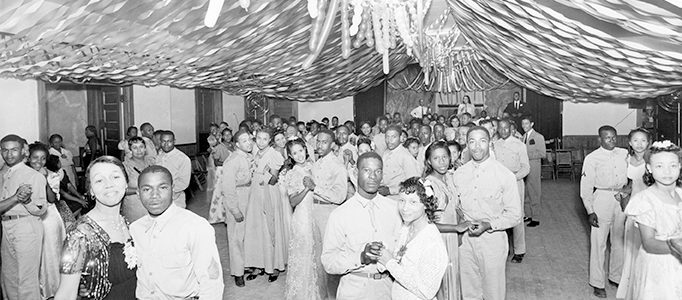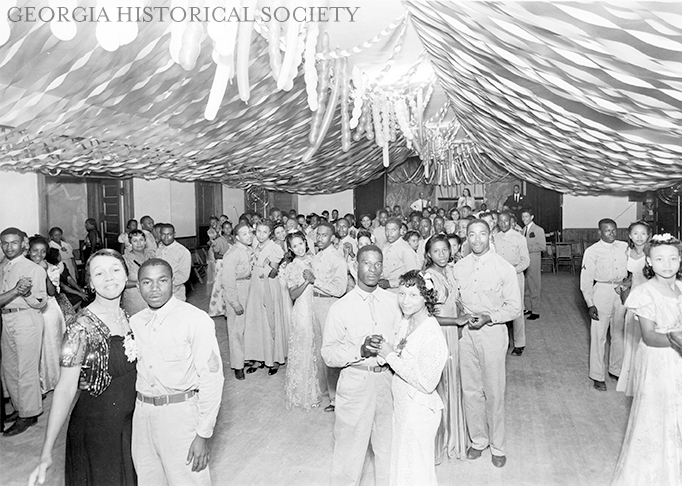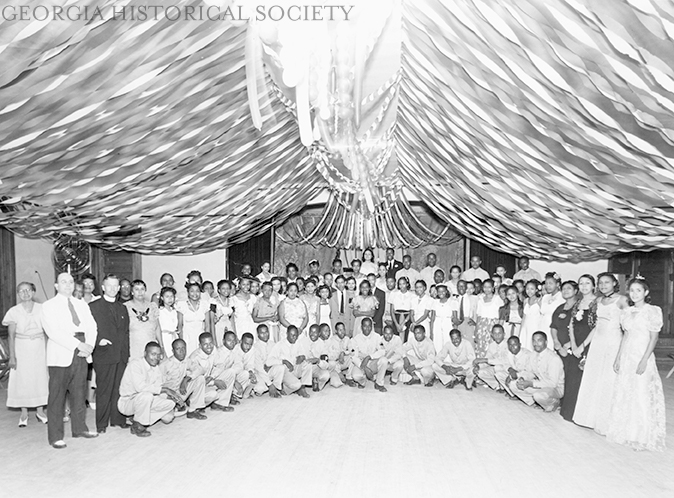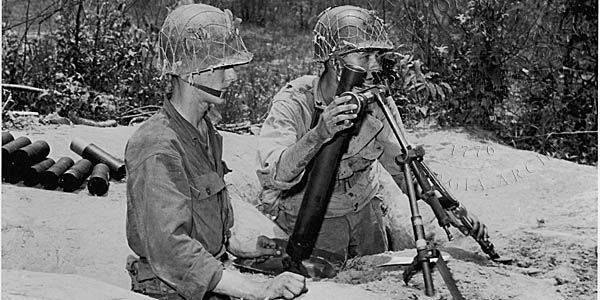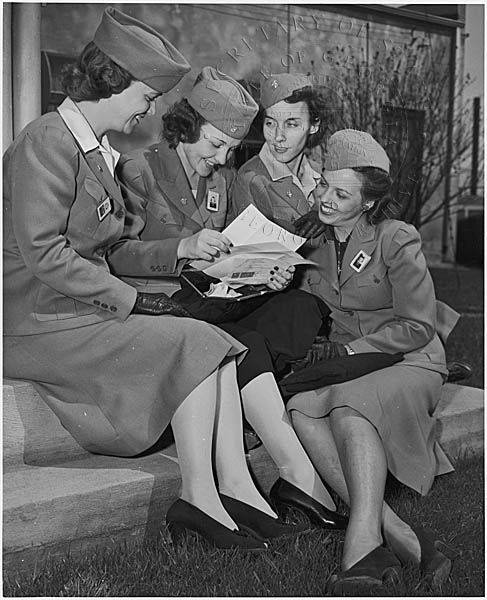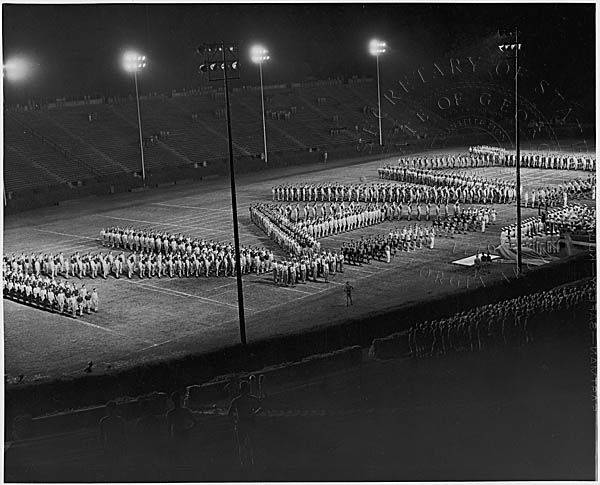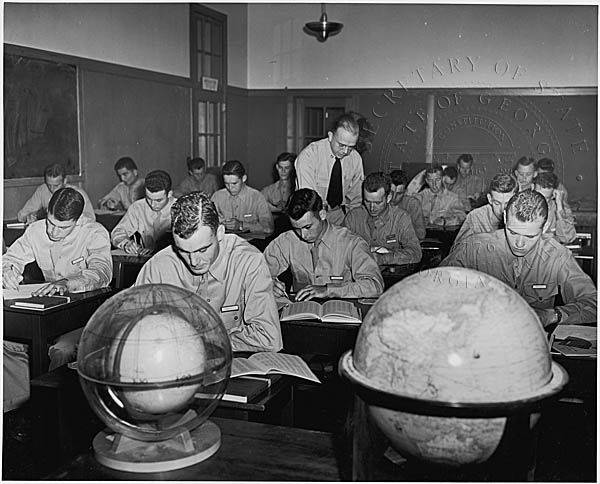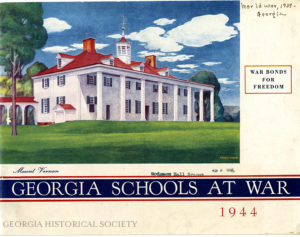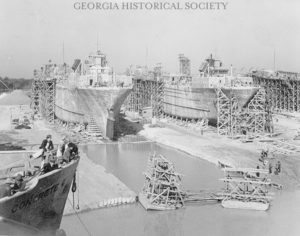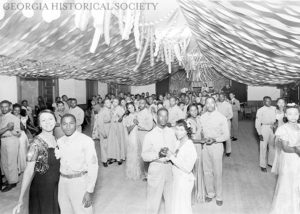Population in the rural areas saw a sharp decline after WWII. Nearly 28,000 families left farming between 1945 and 1950. Although the number of farms decreased the average size of Georgia farms increased. Improvements in farming technology and techniques made farming more efficient. Farmers were encouraged to diversify their crops, prevent soil erosion, and experiment with new methods and products. Mules and plows were replaced by tractors and other motorized equipment.
“Know Georgia’s Products: Key to a New Economy.” Public Service Announcement sponsored by Rich’s Atlanta. 1946. From the Georgia Historical Society Vertical Files, Agriculture – Pamphlets Collection.

